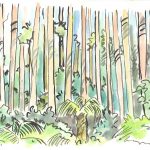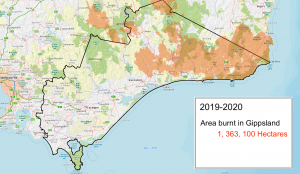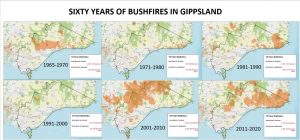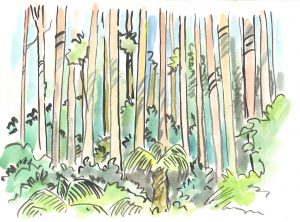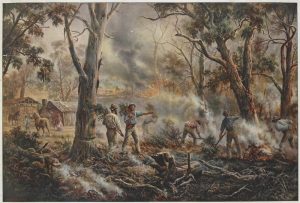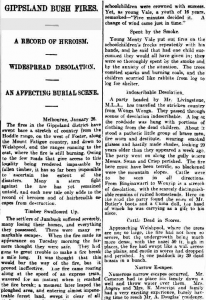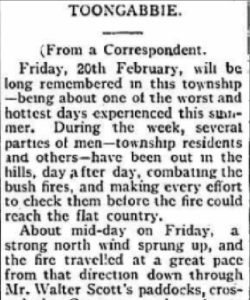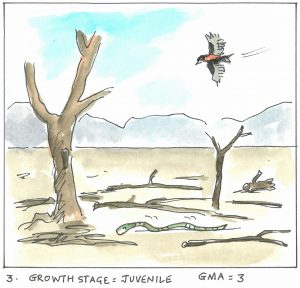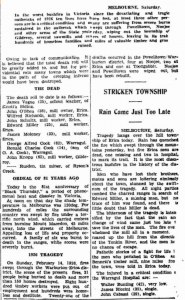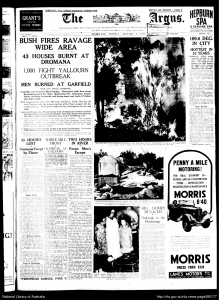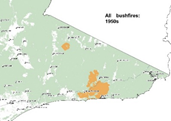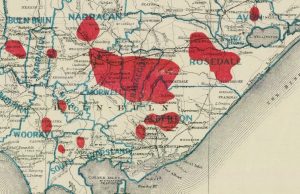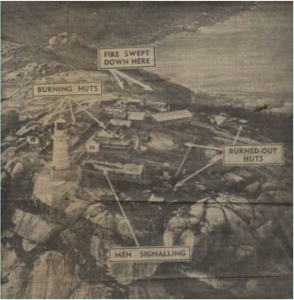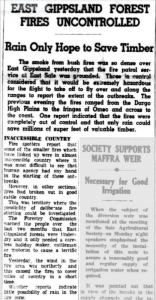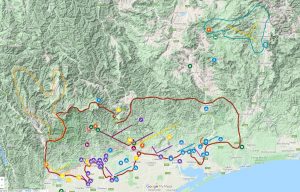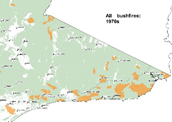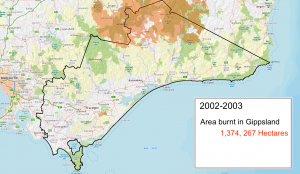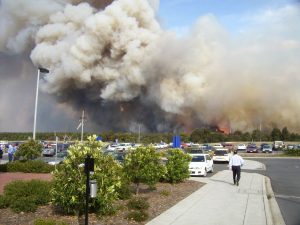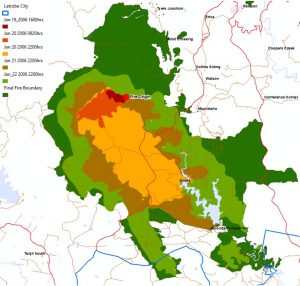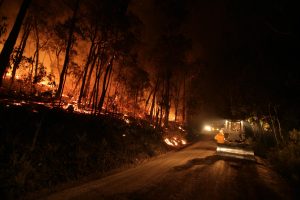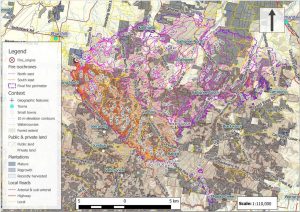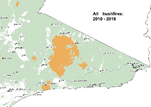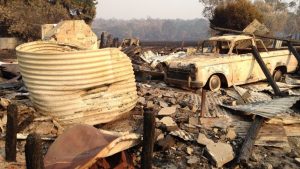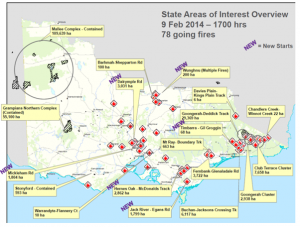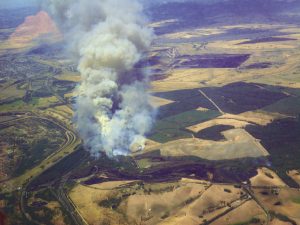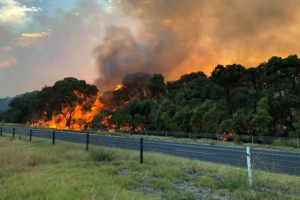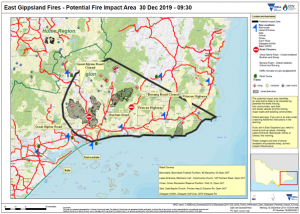Pre-European Fire Regimes
While the first European contact with Gippsland is thought to have occurred early in the 19th century, it wasn’t until the 1830s when settlers steadily began to enter the region for a range of agricultural, timber harvesting and mining purposes clearing large areas of forests and woodlands and draining swamps. This has led to changes in vegetation and natural and indigenous fire regimes that have resulted in a potentially more fire-prone landscape.
Tom Griffiths, an Emeritus Professor of history at ANU explained that European newcomers did not realise that the ‘open, carefully cultivated landscape’ had been created by Aboriginal people for a very long time and required careful management to retain those qualities.
Along with using fire for everyday activities like hunting and cooking, Aboriginal people’s land management practices included cultural burning to help prevent fire risks and maintain and protect native habitats.
Fire regimes prior to European settlement are reflected in the vegetation that was present prior indigenous dispossession, settlement and clearing.
Modelling has recreated what the vegetation may have looked like in 1750
 Ecological Vegetation Class Groups in 1750
Ecological Vegetation Class Groups in 1750
 Ecological Vegetation Class Groups in 2005
Ecological Vegetation Class Groups in 2005
Tolerable fire intervals
Detailed studies and modelling of vegetation in Victoria can explain how it has evolved with natural and indigenous fire.
The dependence on fire for reproduction or the requirement for no fire until plants and trees are old enough to reproduce can be expressed as upper and lower limits .
These can be seen in the following two maps.
For example at Yarram the expected fire interval would be between 15 and 90 years.
 Minimum Tolerable Fire Interval (From the growth and reproduction habits of plant species present it is possible to say that fire frequency was generally no less than the figure shown)
Minimum Tolerable Fire Interval (From the growth and reproduction habits of plant species present it is possible to say that fire frequency was generally no less than the figure shown)
 Maximum Tolerable Fire Interval (From the growth and reproduction habits of plant species present it is possible to say that fire frequency was generally no more than the figure shown)
Maximum Tolerable Fire Interval (From the growth and reproduction habits of plant species present it is possible to say that fire frequency was generally no more than the figure shown)
